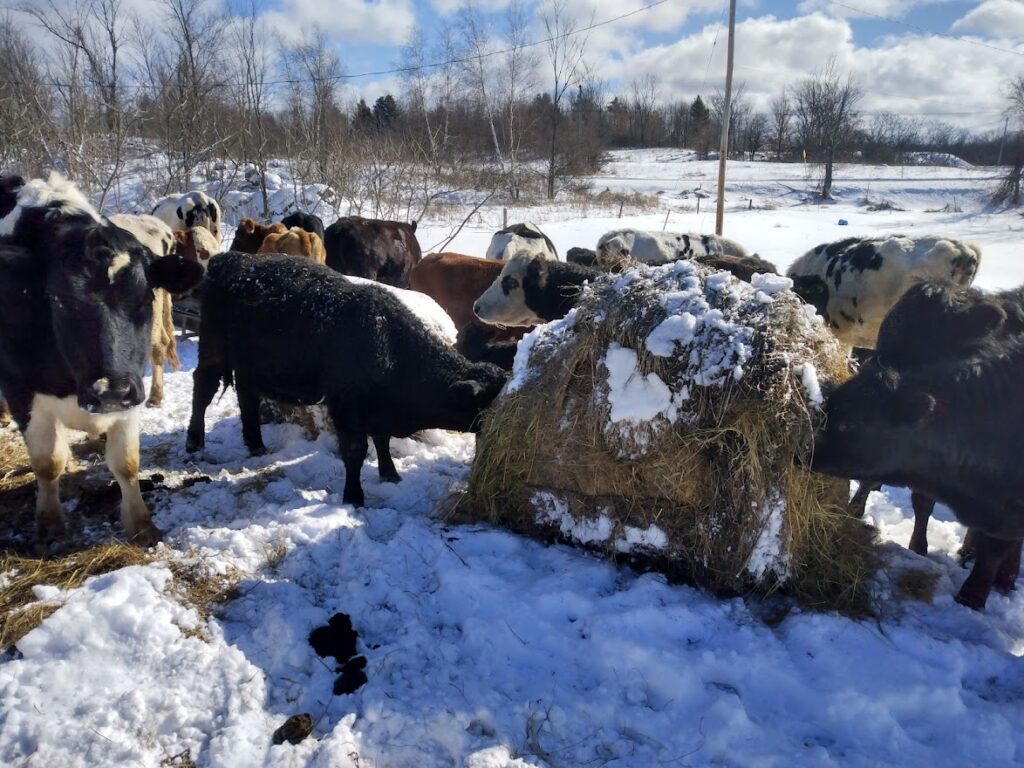
There are several different ways to sell your beef off the farm. One way is to sell them live weight through auction sales as feeders and or cull cows. The other way is direct to the consumer. If you sell through auction sales, they are going to be feeders between 12 to 22 months old and weigh around 600 to 800 pounds. They are going to sell by the pound and the average local price here in our area is between $1.00 to $1.60 a pound. From there, they are going to feedlots to finish them off and sold to meat processing companies to sell through grocery stores.
The other way is to raise them to butchering size and sell directly to the public. There are a couple of different directions you can go. Are you going to sell grass-fed or grain-fed animals? Grass-fed tend to be leaner and take longer to get to the optimal size to butcher. I would stay away from using any growth hormones. Many of the small producers also stay away from using antibiotics and vaccinations. This choice is totally up to the producer. If selling to feedlots, all animals have to have up-to-date vaccinated records.
I have seen where some producers are raising grass-fed animals close to the optimal butchering size and then placing them on a high grain diet for 60 to 90 days to get the marbling in the meat. They are still calling them grass-fed and that notion is up to debate. True grass-fed animals utilize grass pastures during the summer and fall, and hay products during the winter months. You need to know your market and what the consumer wants. I know when it comes to a good steak, I love the marbled meat with fat that adds flavor.
Ok, so now you have the animal where it needs to be weight-wise for butchering. How do I sell the meat to the consumer? You can sell it directly to the consumer live weight and they can arrange where and how they want it butchered. At this point, it is still mooing and alive. Another way is by the quarter, half, or whole cow-dressed weight. You have made the arrangements with a butcher and the butcher weighs the animal hanging weight. I would stick to half or whole cow sales. It’s easier to find one or two people versus four of who wants what.
In our area, you the producer (farmer) arrange for the butcher to dress the animal and its hanging in coolers at their shop. Most producers around here get between $3.50 to $5.00 a pound per side of beef. Now it’s up to the consumer to have it cut and wrapped to their specific needs. The average cost for this is around .50 cents to .80 cents a pound to cut and vacuum seal the meat into portions listed on the cut sheet. This meat does not need the USDA seal on it since the consumer buys the cow upfront.
Another way is for you the producer to arrange with a USDA butcher shop to cut and wrap all the meat to your desired needs and then sell it by the pound directly to the consumer. Many are using Facebook and their websites to do this. They break it down to what the consumer wants. Of course, the steaks and prime cuts bring the most monies. Some producers sell at their local farmers’ markets. It’s hard at the beginning to get customers. I would reach out to friends and family at first and before you know it, you will have folks coming to you through word of mouth wanting your beef.
If you opt to go with a USDA stamped shop, your costs will be higher per pound. It gives you more options, but you need to find the market for all of the beef packages. Selling it whole or half-dressed by your local non-USDA butcher shop gets your monies upfront and it is now between the butcher and the consumer of how they want it and the consumer paying the butcher to get it cut and wrapped. It depends on how involved you want to be in the process and how much time you have to devote to it. The more involved you are, the higher the costs are going to be and that needs to be passed onto the consumer.
It all comes down to how much time you want to spend on the process. Selling it through an auction sales barn will fetch you a lower price overall, but your time is diminished in the process. Selling to family and friends hanging weight involves you arranging the butchering of the animal to the point of hanging in coolers and paying the butcher to do it. The consumer takes over from there. Having a USDA shop do you requires you now to be the producer and marketeer of your product and most often more time selling directly to consumers.
Copyright 2022 Butternut Ridge Farms